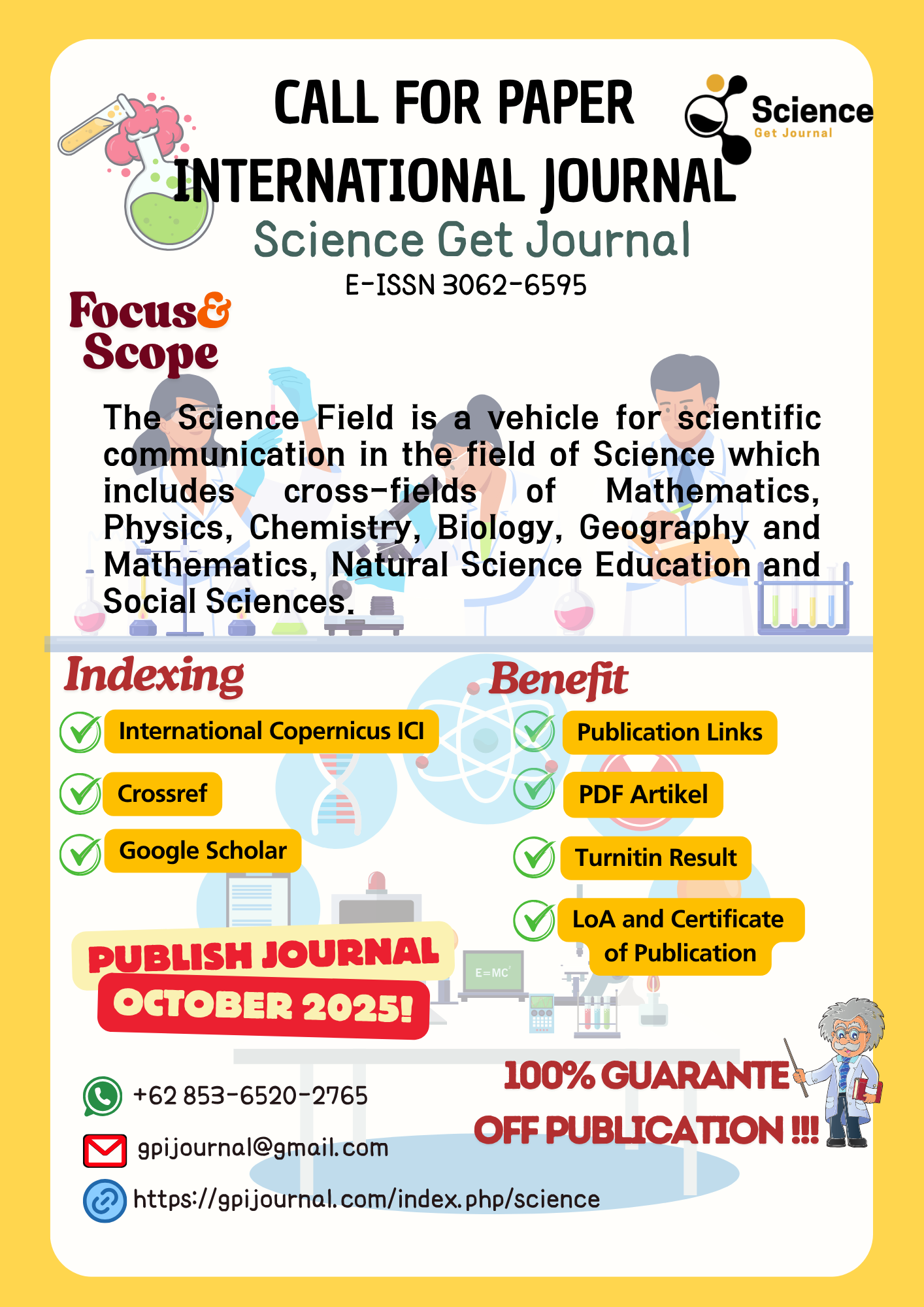Utilization of Natural Adsorbents (Rice Husk, Charcoal) in Drinking Water Treatment to Reduce Heavy Metal and Microorganism Content
DOI:
https://doi.org/10.69855/science.v2i4.276Keywords:
Natural Adsorbents, Water Treatment, Heavy Metals, Rice Husk, Activated Carbon, Adsorption Isotherm, Microbial Contamination, Sustainable TechnologyAbstract
Access to clean drinking water is a fundamental human right, yet millions face contamination from heavy metals and pathogens. This study evaluated the efficacy of natural adsorbents raw rice husk (RH), rice husk ash (RHA), and activated carbon (AC) for treating contaminated water. The adsorbents were prepared, characterized, and tested in batch experiments. Characterization via SEM, FTIR, and BET revealed that activation significantly enhanced properties; AC exhibited the highest surface area (732.5 m²/g) and porosity, followed by RHA and RH. Under optimized conditions (pH 6-7, dosage 2 g/L, contact time 60 min), AC demonstrated superior removal efficiencies for Pb²⁺ (92.6%), As³⁺ (88.4%), and F⁻ (75.1%). Adsorption data best fit the Langmuir isotherm and pseudo-second-order kinetic model, indicating monolayer chemisorption. However, microbial removal was limited (<30% for E. coli), underscoring the need for complementary disinfection. Regeneration studies showed AC maintained >80% efficiency after three cycles. The findings confirm that activated carbon is highly effective, while rice husk ash is a viable low-cost alternative for heavy metal and fluoride removal. For comprehensive water safety, integrating these adsorbents into hybrid treatment systems is recommended.
References
Asere, T. G., Stevens, C. V., & Du Laing, G. (2019). Use of (modified) natural adsorbents for arsenic remediation: A review. Science of the Total Environment, 676, 706–719. https://doi.org/10.1016/j.scitotenv.2019.04.237
Charbti, H., Hellal, M. S., & Kamel, M. (2022). Adsorption of fluoride from aqueous solution using rice husk ash: Kinetics and equilibrium studies. Journal of Environmental Chemical Engineering, 10(3), 107732. https://doi.org/10.1016/j.jece.2022.107732
Chen, X., Li, P., Kang, Y., & Wang, Z. (2022). Regeneration performance and mechanism of modified biochar for phosphate removal after multiple cycles. Journal of Cleaner Production, 380, 135091. https://doi.org/10.1016/j.jclepro.2022.135091
Crini, G., & Lichtfouse, E. (2019). Advantages and disadvantages of techniques used for wastewater treatment. Environmental Chemistry Letters, 17(1), 145–155. https://doi.org/10.1007/s10311-018-0785-9
Eberle, J. A., Schmidt, L., & Mueller, B. (2022). Natural zeolites in water treatment: Efficiency and sustainability assessment for ammonium removal. Journal of Water Process Engineering, 49, 103057. https://doi.org/10.1016/j.jwpe.2022.103057
Foo, K. Y., & Hameed, B. H. (2019). An overview of landfill leachate treatment via activated carbon adsorption process. Journal of Hazardous Materials, 171(1-3), 54–60. https://doi.org/10.1016/j.jhazmat.2009.06.038
Ganvir, V. (2025). Sustainable materials for water purification. Elsevier.
Gupta, V. K., Agarwal, S., & Saleh, T. A. (2018). Chromium removal by combining the magnetic properties of iron oxide with adsorption properties of carbon nanotubes. Water Research, 45(6), 2207–2212. https://doi.org/10.1016/j.watres.2011.01.012
Kumar, A., Jena, H. M., & Devi, P. (2022). Adsorption of Cr(VI) from aqueous solution by prepared high surface area activated carbon from Fox nutshell by chemical activation with H3PO4. Journal of Environmental Chemical Engineering, 10(1), 107061. https://doi.org/10.1016/j.jece.2021.107061
Li, Y., Wang, Z., & Liu, X. (2019). A comparative study on the adsorption of heavy metals by biochar derived from various agricultural wastes. Environmental Science and Pollution Research, 26(18), 18604–18613. https://doi.org/10.1007/s11356-019-05214-x
Rao, M. M., Reddy, D. H. K. K., & Venkateswarlu, P. (2020). Defluoridation of drinking water using a new sorbent: Magnesium incorporated bentonite clay. Journal of Hazardous Materials, 384, 121304. https://doi.org/10.1016/j.jhazmat.2019.121304
Sharma, A., & Singh, G. (2020). Removal of fluoride from aqueous solution using biochar prepared from eucalyptus wood: Equilibrium and thermodynamic studies. Journal of Environmental Management, 271, 111010. https://doi.org/10.1016/j.jenvman.2020.111010
Tan, K. L., Hameed, B. H., & Foo, K. Y. (2021). An overview of the application of biochar in the adsorption of heavy metals for water purification. Journal of Environmental Chemical Engineering, 9(4), 105588. https://doi.org/10.1016/j.jece.2021.105588
Wu, J., Wang, T., & Zhang, Y. (2019). The role of physical adsorption in microbial removal by carbon-based materials: A critical review. Chemosphere, 235, 702–710. https://doi.org/10.1016/j.chemosphere.2019.06.195
Zaimee, M. E. A., Sarfaraz, K., & Rahman, M. M. (2021). Heavy metals removal from water by efficient adsorbents. Water, 13(19), 2659. https://doi.org/10.3390/w13192659
Zhang, Y., Song, X., & Xu, Z. (2021). Utilization of rice husk ash in the preparation of high-performance mesoporous silica for vapor adsorption. Microporous and Mesoporous Materials, 317, 111002. https://doi.org/10.1016/j.micromeso.2021.111002
Downloads
Published
How to Cite
Issue
Section
License
Copyright (c) 2025 Lieza Corsita

This work is licensed under a Creative Commons Attribution 4.0 International License.





